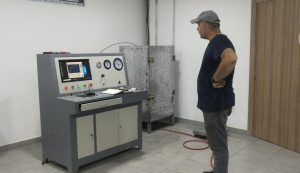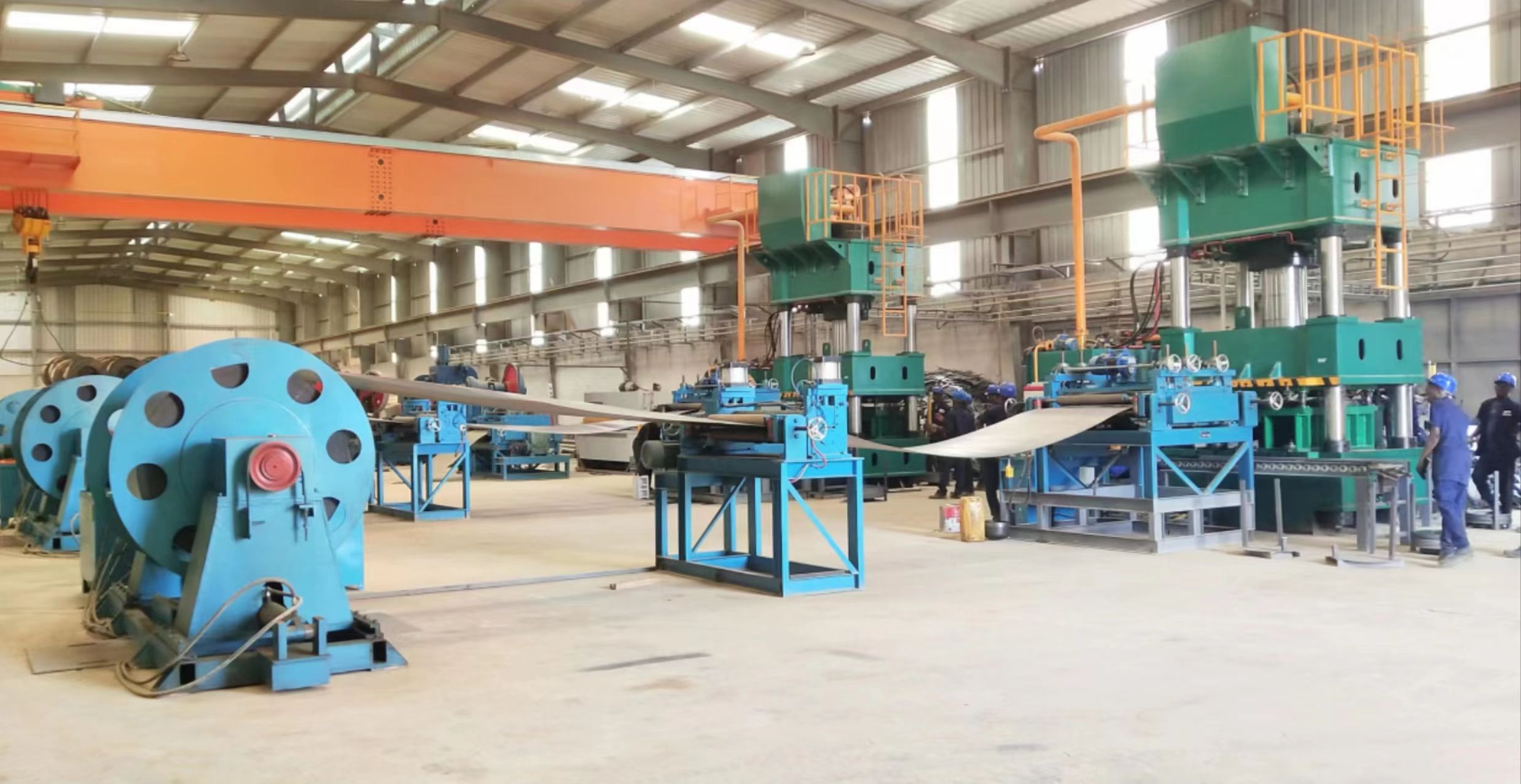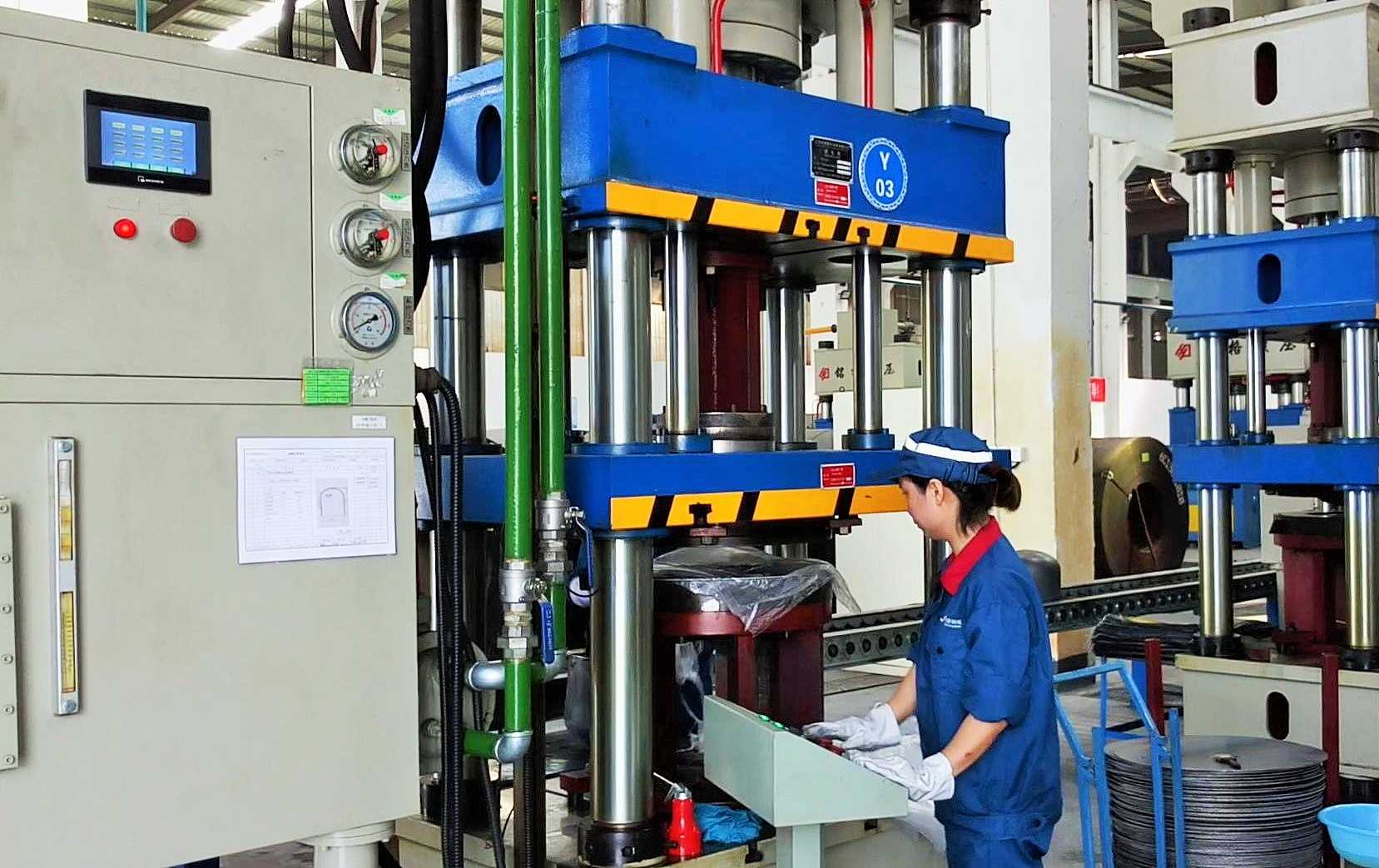In the world of engineering and industrial safety, hydraulic burst testing plays a crucial role in evaluating the integrity and durability of pressure vessels. This meticulous process ensures that these containers, designed to hold gases or liquids at high pressures, can withstand the forces they will encounter during their operational life. The equipment used for the equipment is sophisticated and highly automated, incorporating a high-pressure pump, a test cabinet, and a computer control system. This article delves into the details of hydraulic burst testing, exploring the components, processes, and significance of this essential procedure.
Understanding Hydraulic Burst Testing
Hydraulic burst testing is a method used to determine the maximum pressure a pressure vessel, such as a gas cylinder or a hydraulic accumulator, can withstand before it fails. This type of testing is vital for ensuring the safety and reliability of these vessels, as it helps to identify any potential weaknesses or defects that could lead to catastrophic failures under pressure.
The primary components of equipment include:
- High-Pressure Pump: This pump is responsible for generating the high pressures required to test the strength of the pressure vessel. It must be capable of producing pressures significantly higher than the vessel’s intended operating pressure to accurately simulate extreme conditions.
- Test Cabinet: The test cabinet is a secure enclosure where the pressure vessel is placed during the test. It is designed to contain any fragments or debris that may result from the bursting of the vessel, ensuring the safety of the operators and the surrounding environment.
- Computer Control System: The computer control system is the brain of the hydraulic burst testing equipment. It controls the entire testing process, from regulating the pressure applied to the vessel to monitoring and recording various parameters such as deformation pressure, burst pressure, and the volume of water used.
The Testing Process
The equipment process is meticulously controlled and monitored by the computer control system. The following steps outline a typical test sequence:
- Preparation: The pressure vessel is filled with water, which is used as the testing medium because it is incompressible and minimizes the risk of an explosion compared to gases. The vessel is then placed inside the test cabinet.
- Initial Pressure Application: The high-pressure pump begins to apply pressure to the vessel. This pressure is gradually increased under the control of the computer system.
- Monitoring Parameters: As the pressure increases, the computer system continuously monitors and records key parameters such as the pressure at which the vessel begins to deform and the pressure at which it ultimately bursts. This data is crucial for assessing the vessel’s performance and identifying any potential issues.
- Burst Point: The test continues until the vessel bursts or reaches its maximum designed pressure. At the burst point, the computer system captures and records the exact pressure and other relevant data.
- Analysis and Reporting: After the test, the recorded data is analyzed to determine the vessel’s strength and identify any failure points. This information is used to improve the design and manufacturing process of the pressure vessels.
Significance of Hydraulic Burst Testing
The equipment is essential for several reasons:
- Safety Assurance: The primary purpose of burst testing is to ensure the safety of pressure vessels. By testing them under extreme conditions, manufacturers can guarantee that the vessels will not fail catastrophically during normal operation, thereby protecting lives and property.
- Quality Control: Burst testing is a critical component of quality control in the manufacturing process. It helps to identify and eliminate defective products before they reach the market, ensuring that only the highest quality vessels are used in industrial applications.
- Regulatory Compliance: Many industries are subject to strict regulations regarding the safety and performance of pressure vessels. Hydraulic burst testing helps manufacturers comply with these regulations by providing documented evidence of the vessels’ capabilities.
- Design Improvement: The data collected during burst testing can be used to improve the design and manufacturing process of pressure vessels. By understanding how and why vessels fail, engineers can develop more robust and reliable products.

Technical Aspects of Hydraulic Burst Testing
To fully appreciate the importance and complexity of the equipment, it’s essential to delve into the technical aspects of the process.
- Pressure Measurement: Accurate pressure measurement is critical in burst testing. High-precision sensors are used to monitor the pressure within the vessel continuously. These sensors must be calibrated regularly to ensure their accuracy and reliability.
- Data Acquisition: The computer control system is equipped with advanced data acquisition software that records and analyzes the pressure data in real time. This software can generate detailed reports and graphs that provide insights into the vessel’s performance.
- Safety Features: Given the high pressures involved, safety is a paramount concern in the equipment. The test cabinet is designed to withstand the explosive forces generated during a burst. Additionally, the system includes emergency shutoff valves and pressure relief mechanisms to prevent accidents.
- Material Considerations: The materials used in the construction of pressure vessels can significantly impact their performance under pressure. Hydraulic burst testing helps to evaluate the suitability of different materials and identify any material-related issues that could compromise the vessel’s integrity.
Applications of Hydraulic Burst Testing
The equipment is used across a wide range of industries, each with its unique requirements and challenges. Some of the key applications include:
- Automotive Industry: In the automotive industry,
- the equipment
- is used to evaluate the performance of components such as brake hoses, fuel lines, and hydraulic cylinders. Ensuring the reliability of these components is crucial for vehicle safety.
- Aerospace Industry: Aerospace applications demand the highest levels of safety and reliability. The equipment is used to test components such as fuel tanks, hydraulic actuators, and pressure vessels used in aircraft and spacecraft.
- Oil and Gas Industry: The oil and gas industry relies heavily on pressure vessels for the storage and transportation of gases and liquids. Hydraulic burst testing helps to ensure the safety and performance of these vessels under extreme conditions.
- Manufacturing Industry: In general manufacturing, the equipment is used to test a wide range of products, from pressure cookers to industrial boilers. This testing helps to identify and eliminate potential failure points in these products.
Challenges and Future Developments
Despite its importance, the equipment presents several challenges:
- Cost and Complexity: The equipment is expensive and complex to operate. The need for highly trained personnel and regular maintenance adds to the overall cost of testing.
- Environmental Considerations: The use of water as a testing medium can raise environmental concerns, particularly in regions with limited water resources. Finding more sustainable testing methods is an ongoing challenge.
- Advancements in Materials: As new materials and manufacturing techniques are developed, burst testing methods must evolve to keep pace. This requires continuous research and development to ensure that testing procedures remain effective.
Future developments in hydraulic burst testing are likely to focus on improving the efficiency and sustainability of the process. Advances in sensor technology, data analysis, and computer control systems will enhance the accuracy and reliability of testing. Additionally, the development of alternative testing mediums and methods may help to reduce the environmental impact of burst testing.
Conclusion
Hydraulic burst testing is an essential process for ensuring the safety and reliability of pressure vessels used across various industries. By subjecting these vessels to extreme conditions, manufacturers can identify and eliminate potential weaknesses, improve product quality, and comply with regulatory standards. Despite the challenges involved, the equipment remains a critical component of industrial safety and quality control. As technology advances, the methods and equipment used for burst testing will continue to evolve, providing even greater assurance of the safety and performance of pressure vessels.




